Intro by Jim Kennedy
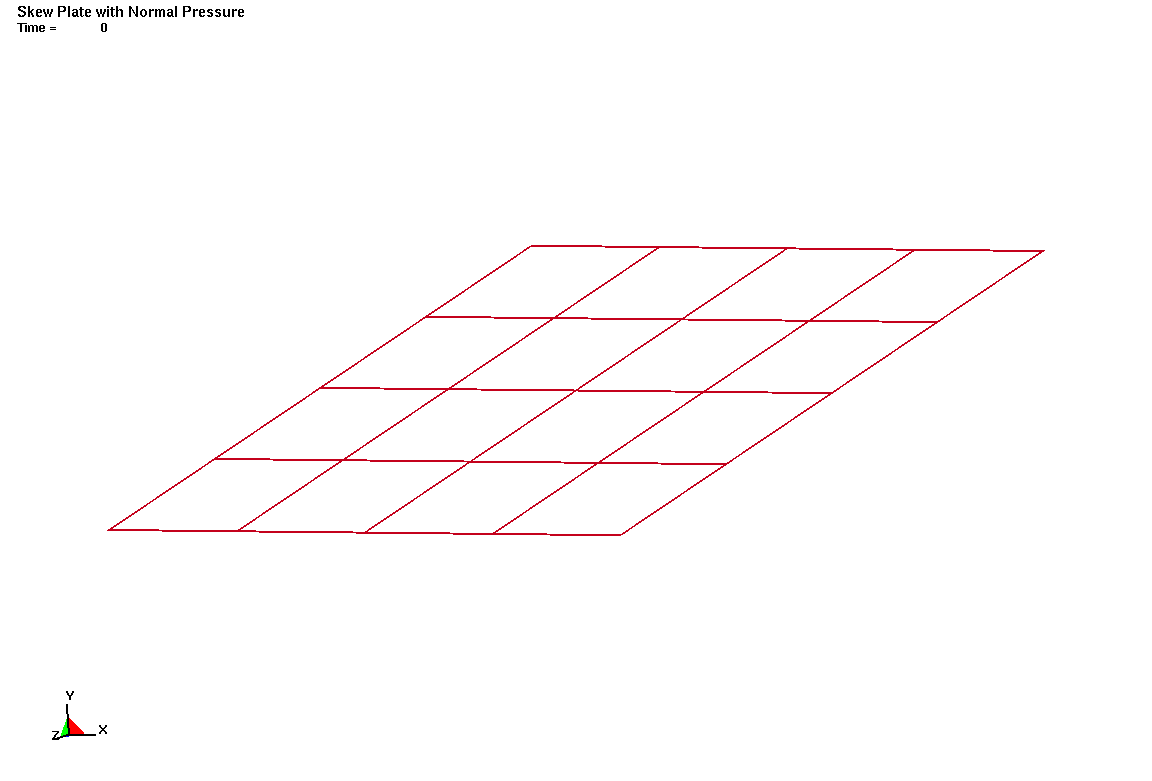
Thin Shell Plate
A simply supported plate of equal side length is subjected to a normal pressure on the top face. Differences between Belytschko-Tsai-Shell (elform 2), Hughes-Liu-Shell (elform 6) and fully integrated Shell (elform 16) can be studied. Example 1 from Introductory Manual for LS-DYNA Users by James M. Kennedy.
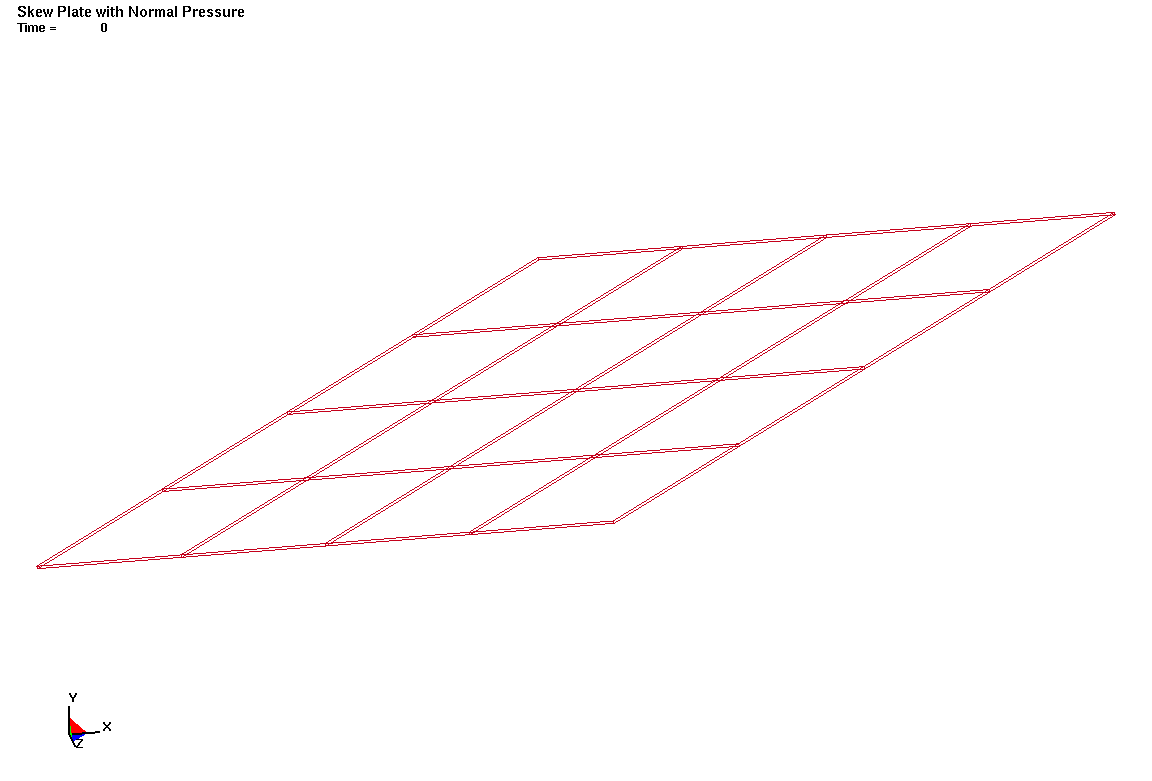
Thick Shell Plate
A simply supported plate of equal side length is subjected to a normal pressure on the top face. Differences between thick shell formulations (elform 2, 3 and 5) can be studied. Example 2 from Introductory Manual for LS-DYNA Users by James M. Kennedy.
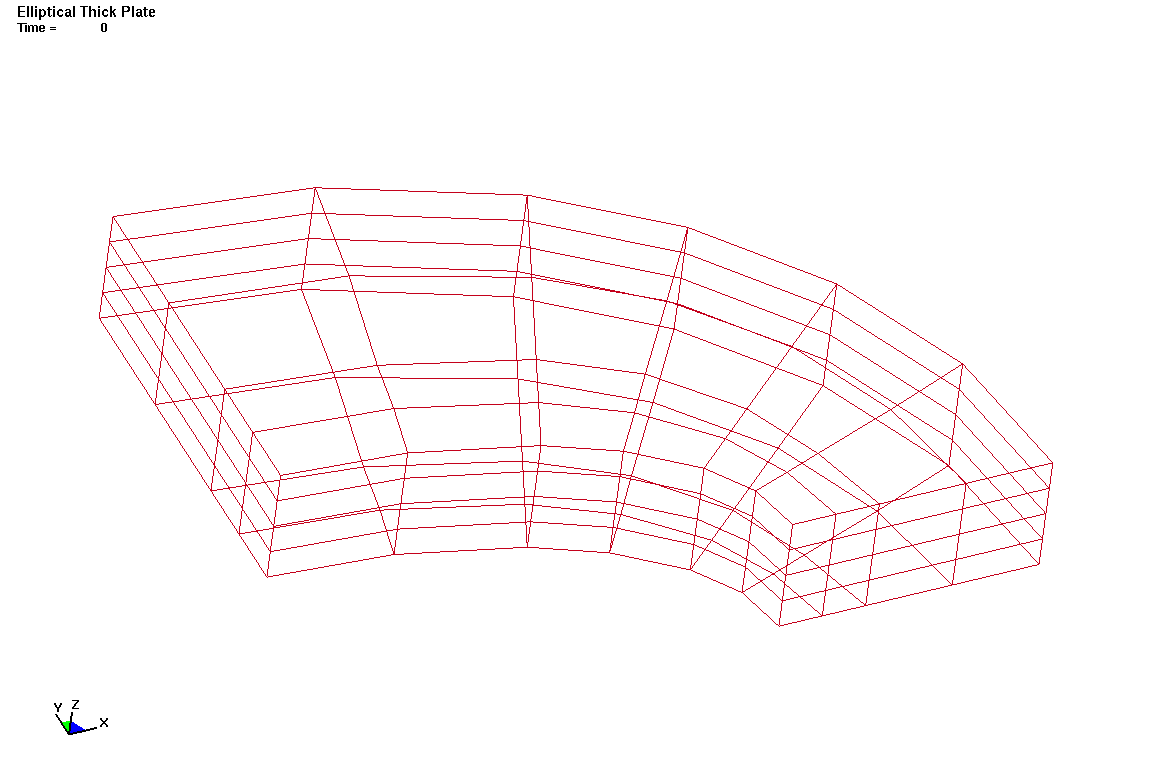
Elliptical Thick Plate (coarse mesh)
An elliptical thick plate is subjected to a normal pressure on the top face. Differences between constant stress solid (elform 1), fully integrated S/R solid (elforms 2 and -1) and 8 point enhanced strain solid (elform 18) can be studied. Example 3 from Introductory Manual for LS-DYNA Users by James M. Kennedy.
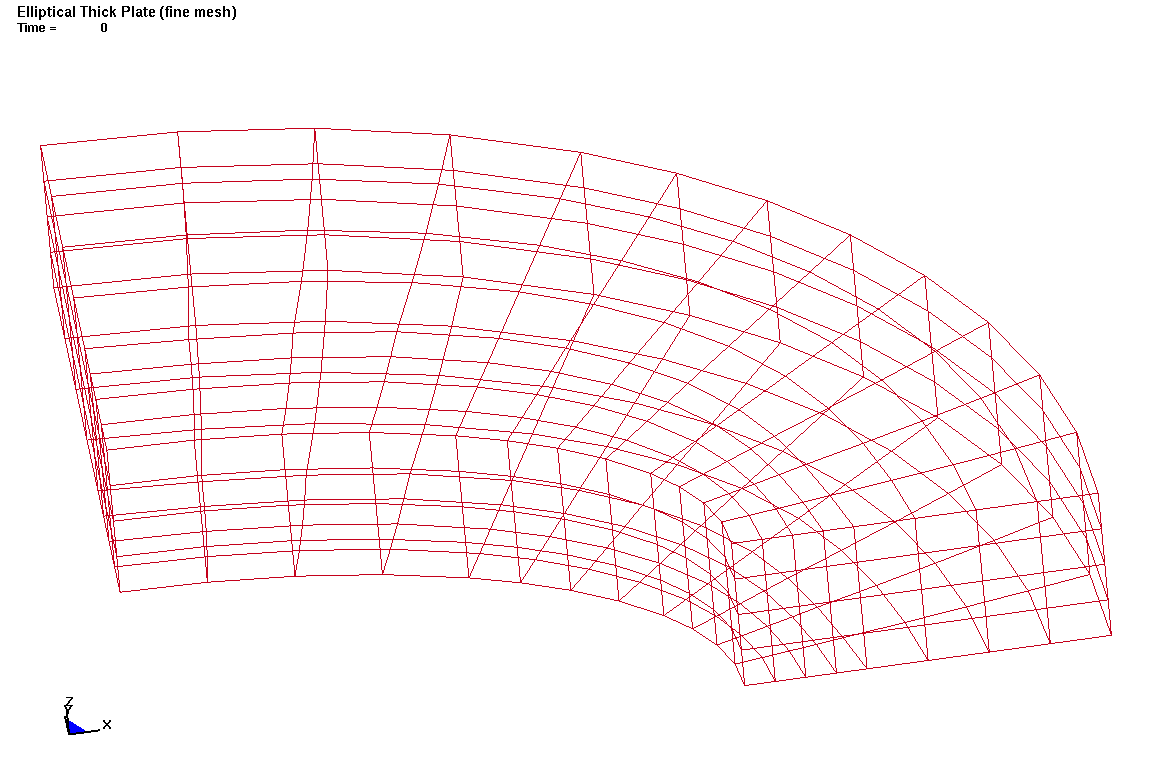
Elliptical Thick Plate (fine mesh)
An elliptical thick plate is subjected to a normal pressure on the top face. Differences between constant stress solid (elform 1), fully integrated S/R solid (elforms 2 and -1) and 8 point enhanced strain solid (elform 18) can be studied. Example 4 from Introductory Manual for LS-DYNA Users by James M. Kennedy.
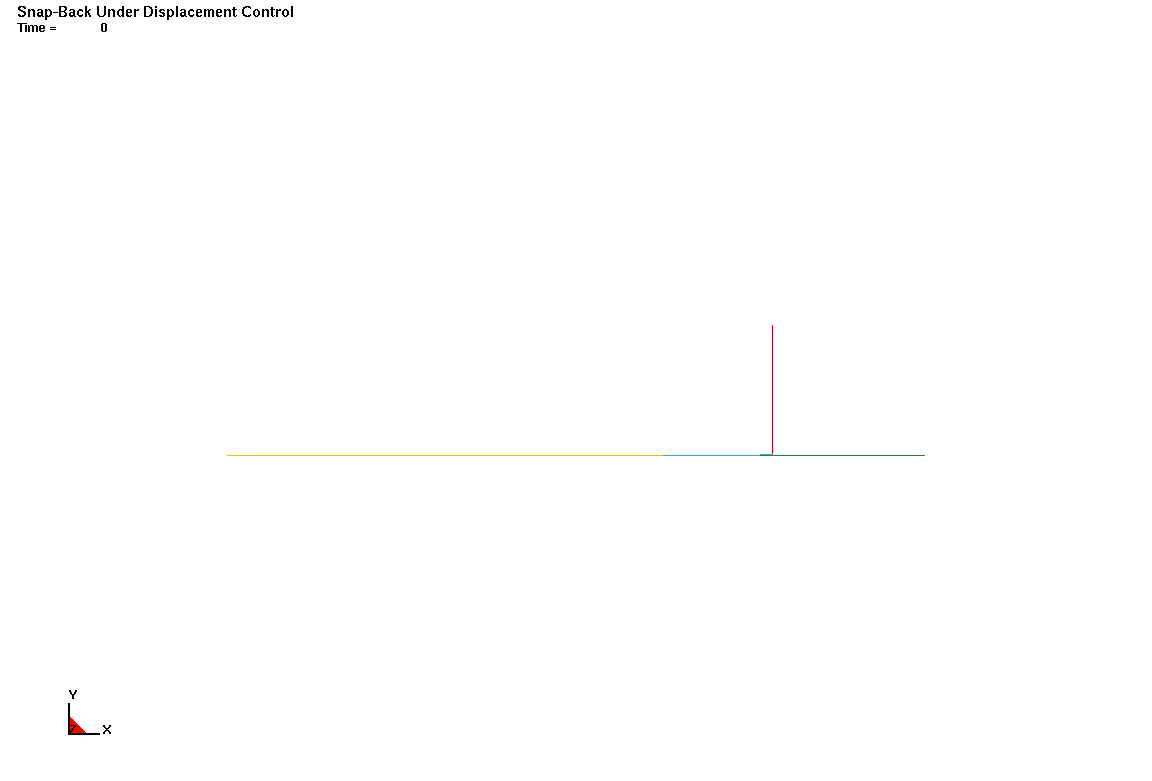
Snap-Back under Displacement Control
The implicit arc length method is used to solve the snap-back of the system. Differences between truss (elform 3) and discrete beam/cable (elform 6) can be studied. Example 5 from Introductory Manual for LS-DYNA Users by James M. Kennedy.
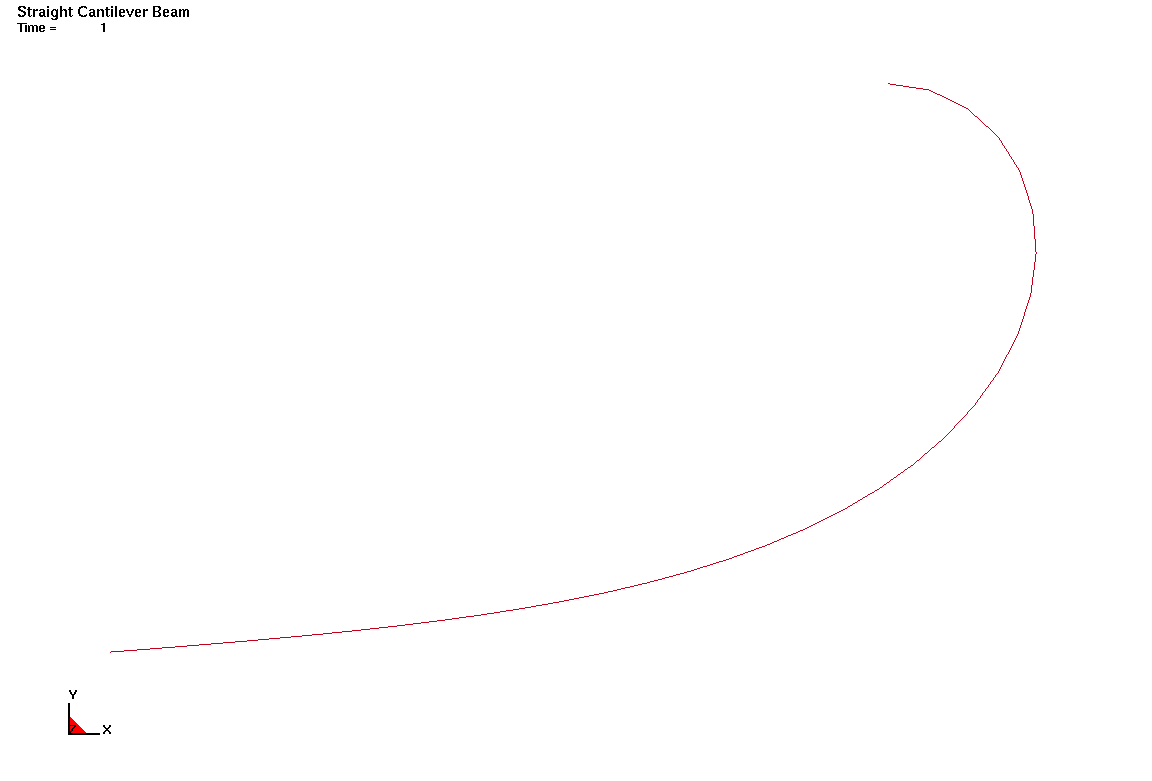
Straight Cantilever Beam
Analysis of a cantilever beam loaded at one end with a quasi-axial load. The material is elastic. Example 6 from Introductory Manual for LS-DYNA Users by James M. Kennedy.
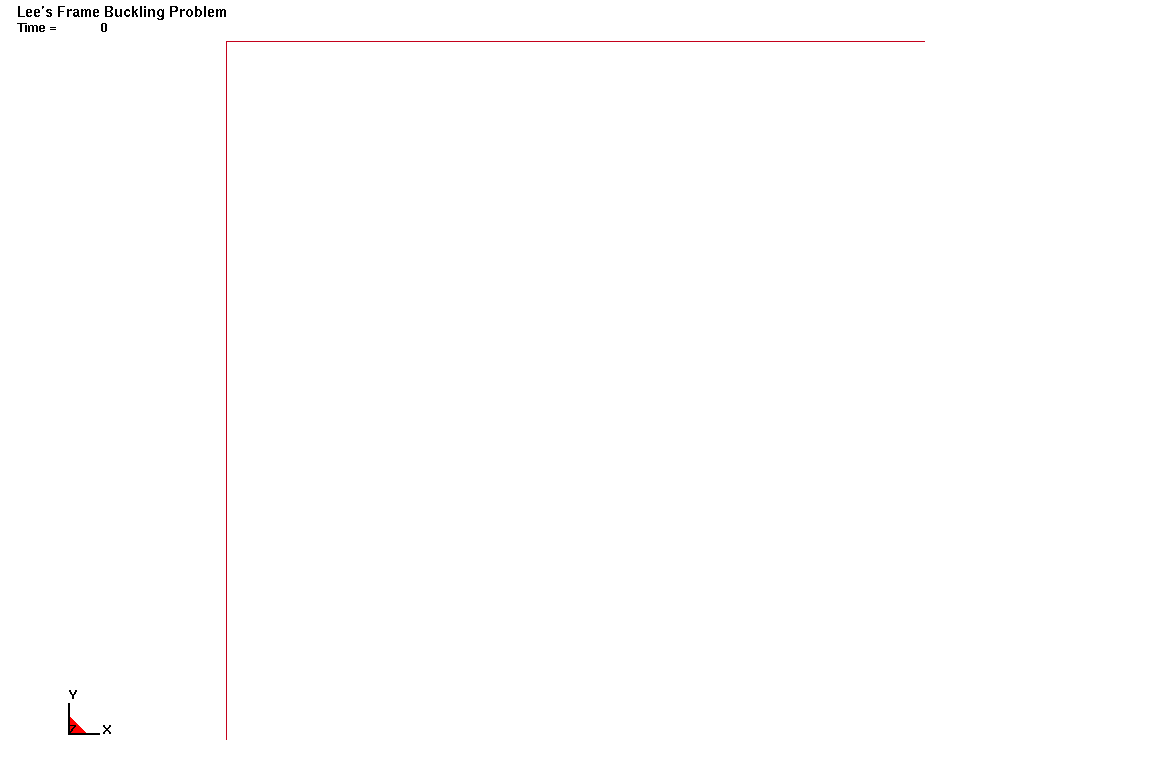
Lee's Frame buckling Problem
A framed structure deforming under a load applied on one node. The frame is pinned to ground at two nodes. Arc-length method is used to capture the post-buckling behavior of the structure. Example 7 from Introductory Manual for LS-DYNA Users by James M. Kennedy.
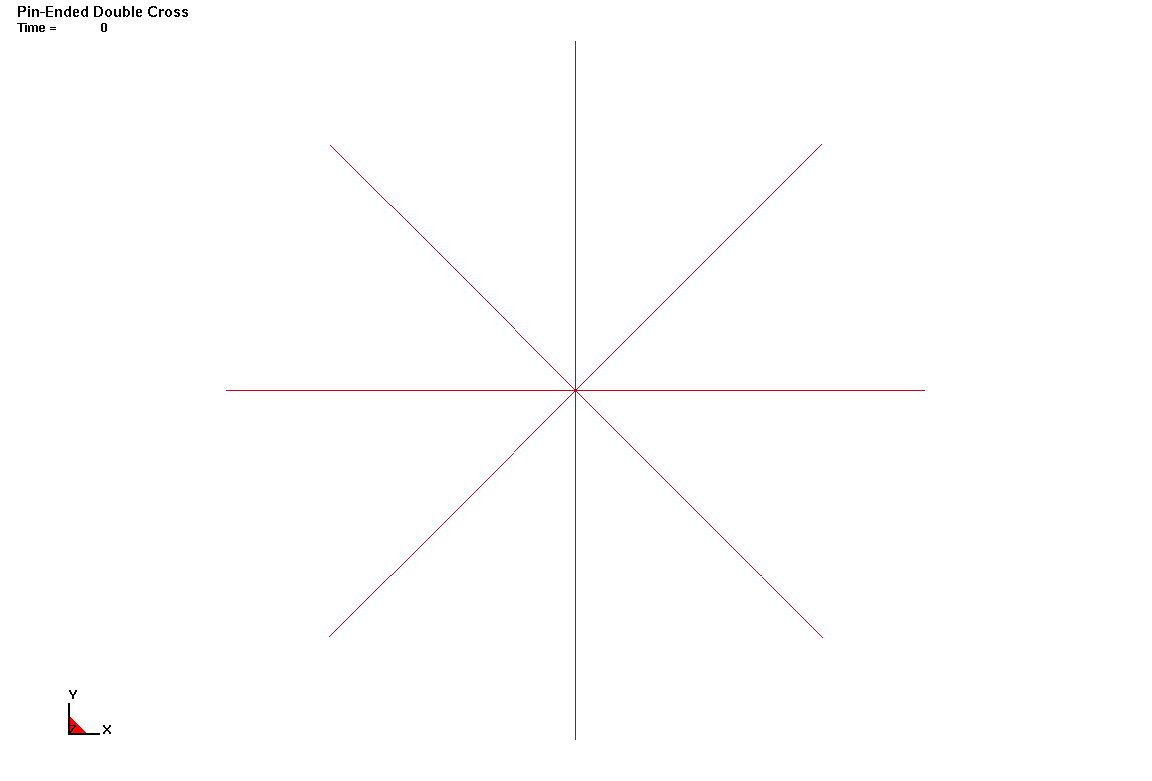
Double Cross In-Plane Vibration
Behavior of beam elements in a modal analysis. The problem requires the extraction of numerically close eigenvalues. Differences between Hughes-Liu beam (elform 1), Belytschko-Schwer beam (elform 2) and linear Timoshenko beam (elform 13) can be studied. Example 8 from Introductory Manual for LS-DYNA Users by James M. Kennedy.
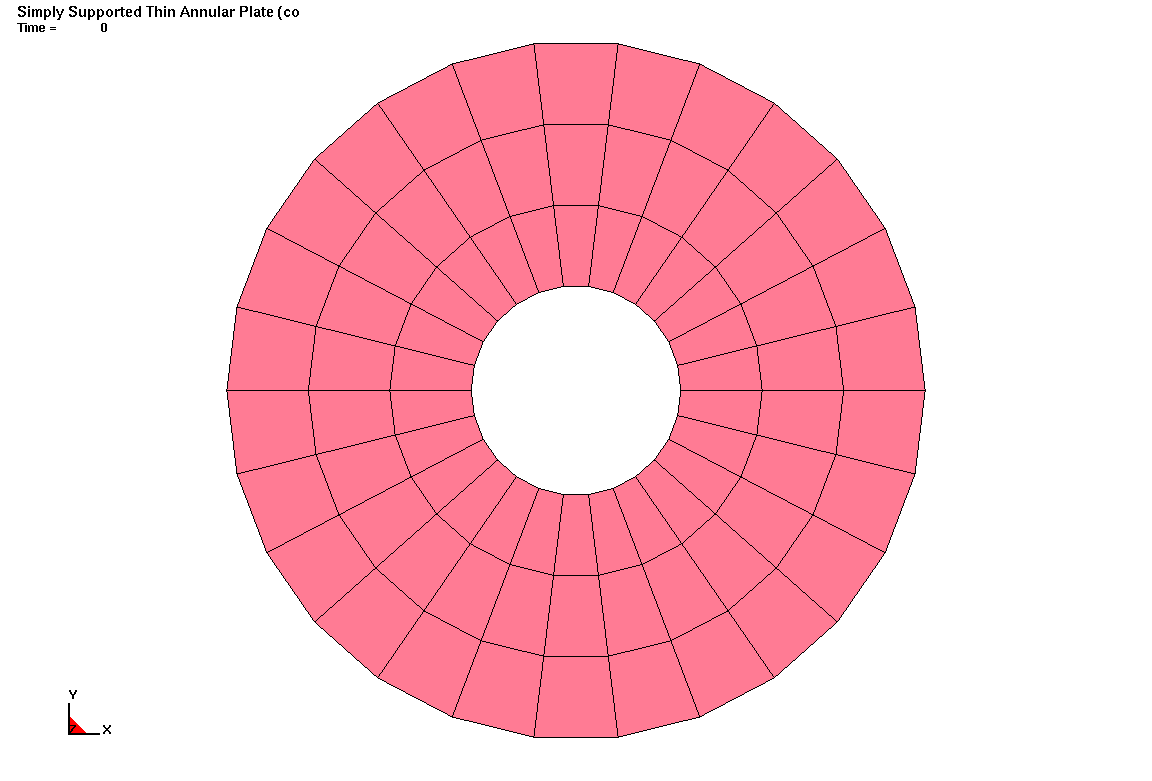
Thin Annular Plate (coarse mesh)
A simply supported annular plate is analyzed to determine the first natural frequencies. Example 9 from Introductory Manual for LS-DYNA Users by James M. Kennedy.
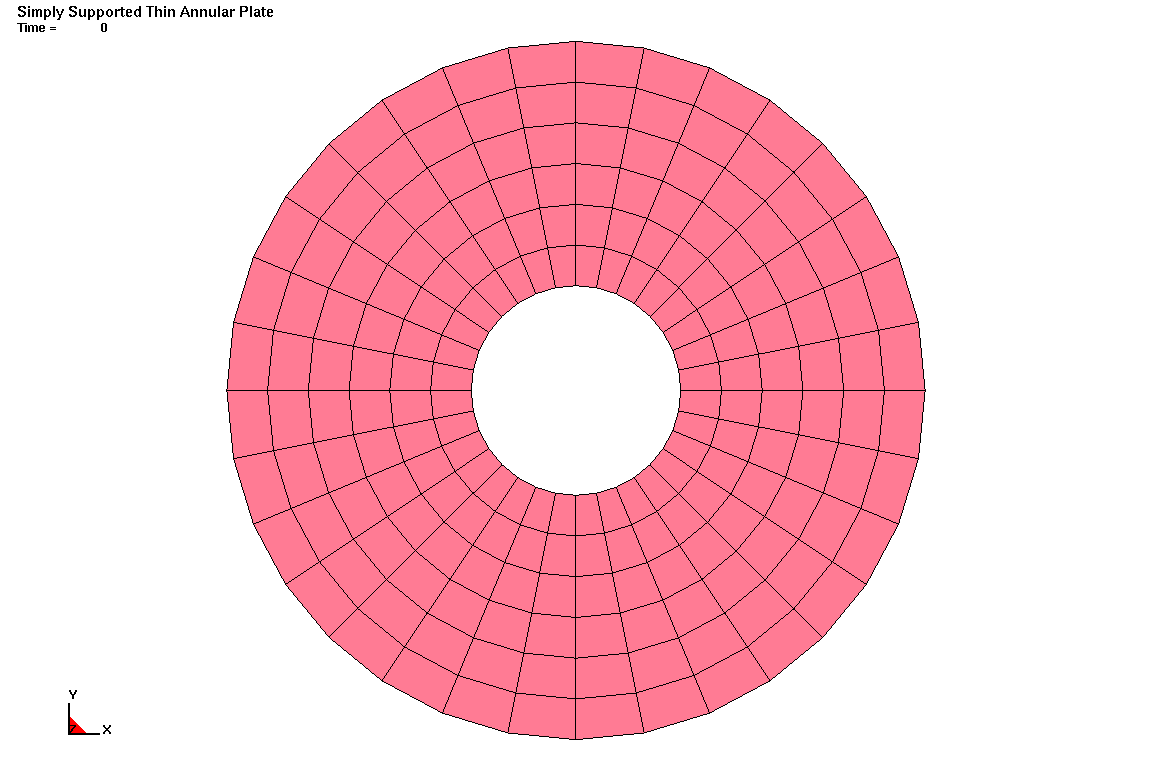
Thin Annular Plate (fine mesh)
A simply supported annular plate is analyzed to determine the first natural frequencies. Example 10 from Introductory Manual for LS-DYNA Users by James M. Kennedy.
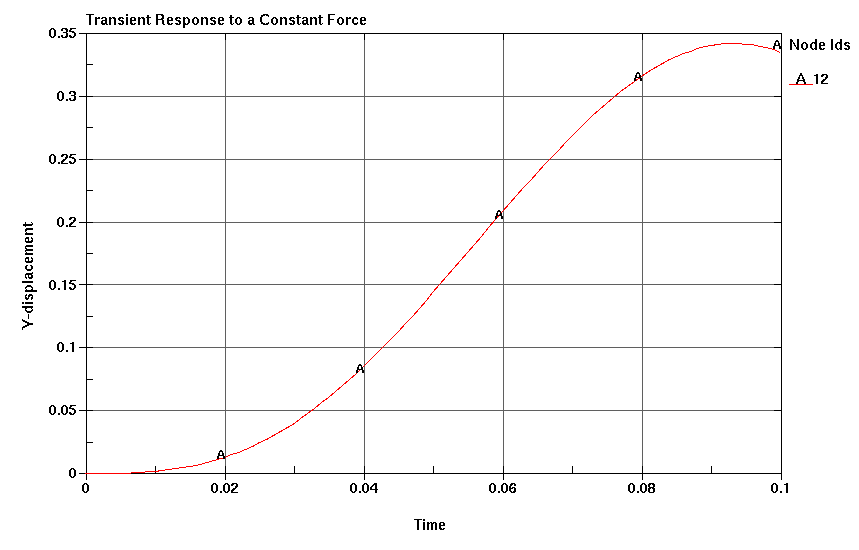
Transient Response to Constant Force
A mass is attached in the middle of a beam. The beam is subjected to dynamic load. Example 11 from Introductory Manual for LS-DYNA Users by James M. Kennedy.
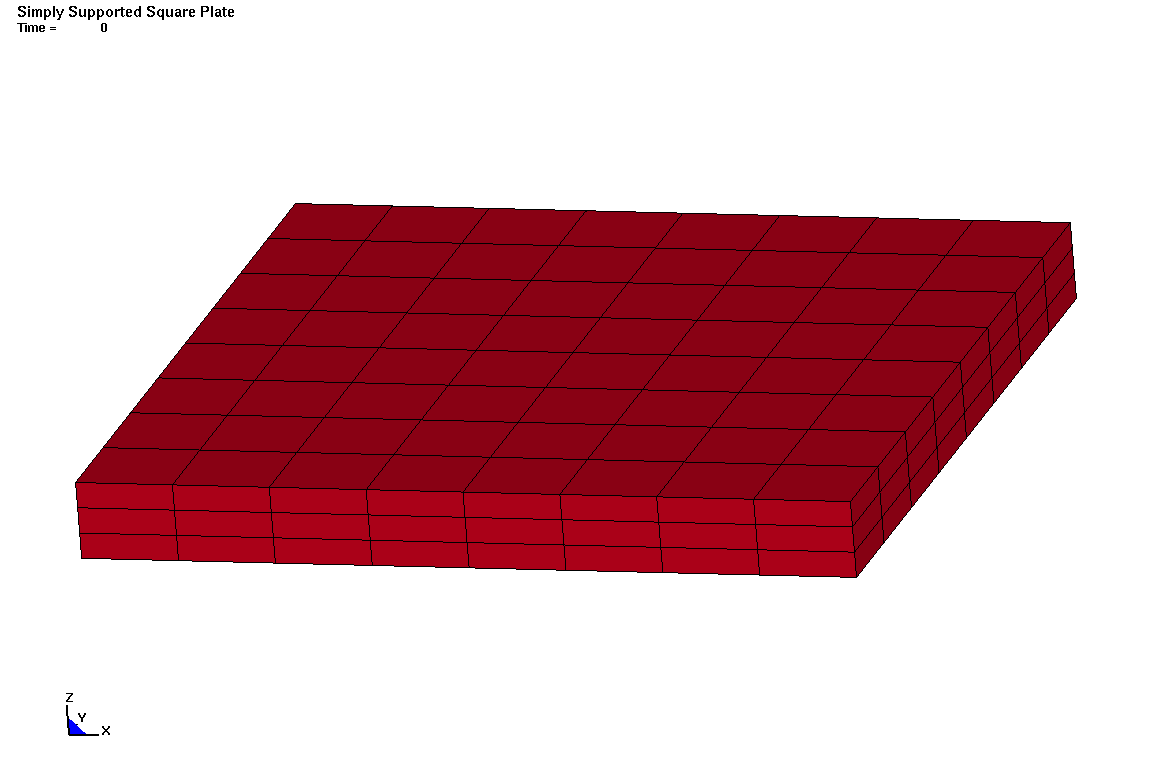
Square Plate Out-of-Plane Vibration (solid mesh)
Natural frequencies of a solid simply supported plate are determined. Differences between constant stress solid (elform 1), fully integrated S/R solid (elforms 2, -1 and -2) and fully integrated quadratic 8 node element with nodal rotations (elform 3) can be studied. Example 12 from Introductory Manual for LS-DYNA Users by James M. Kennedy.
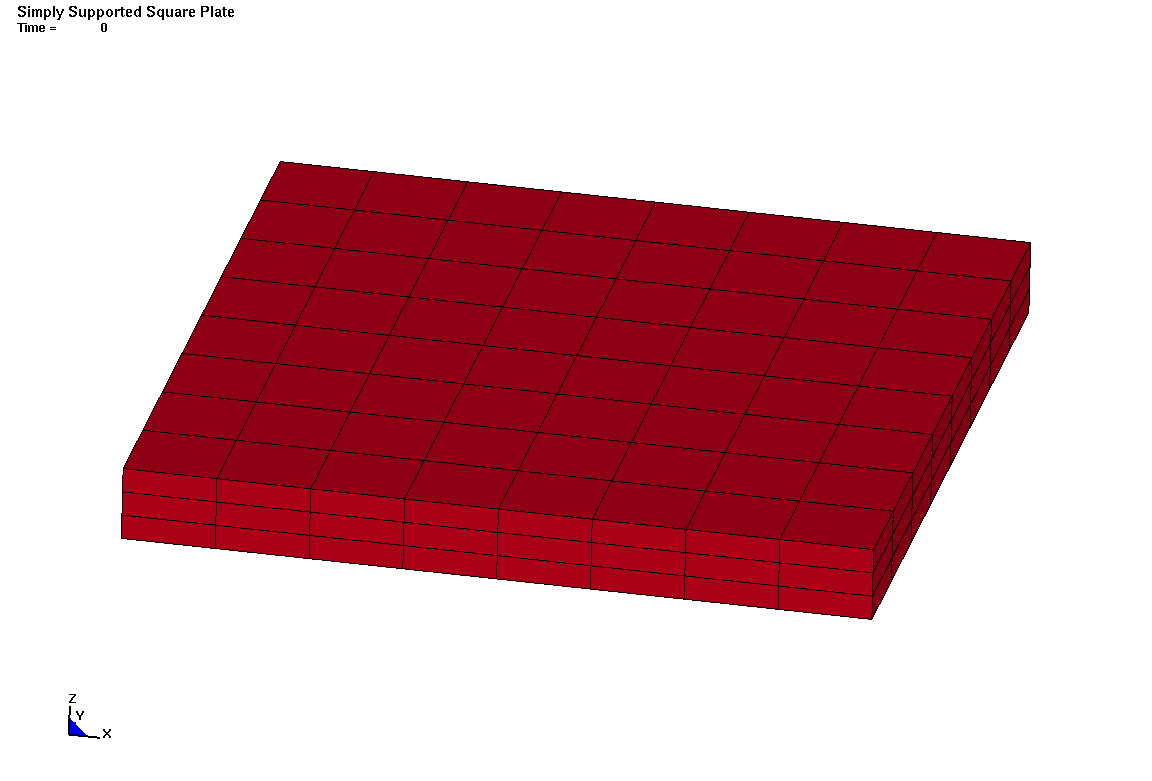
Square Plate Out-of-Plane Vibration (thick shell mesh)
Natural frequencies of a solid simply supported plate are determined. Differences between S/R IPI thick shell (elform 2), assumed strain IPI thick shell (elform 3) and assumed strain RI thick shell (elform 5) can be studied. Example 13 from Introductory Manual for LS-DYNA Users by James M. Kennedy.
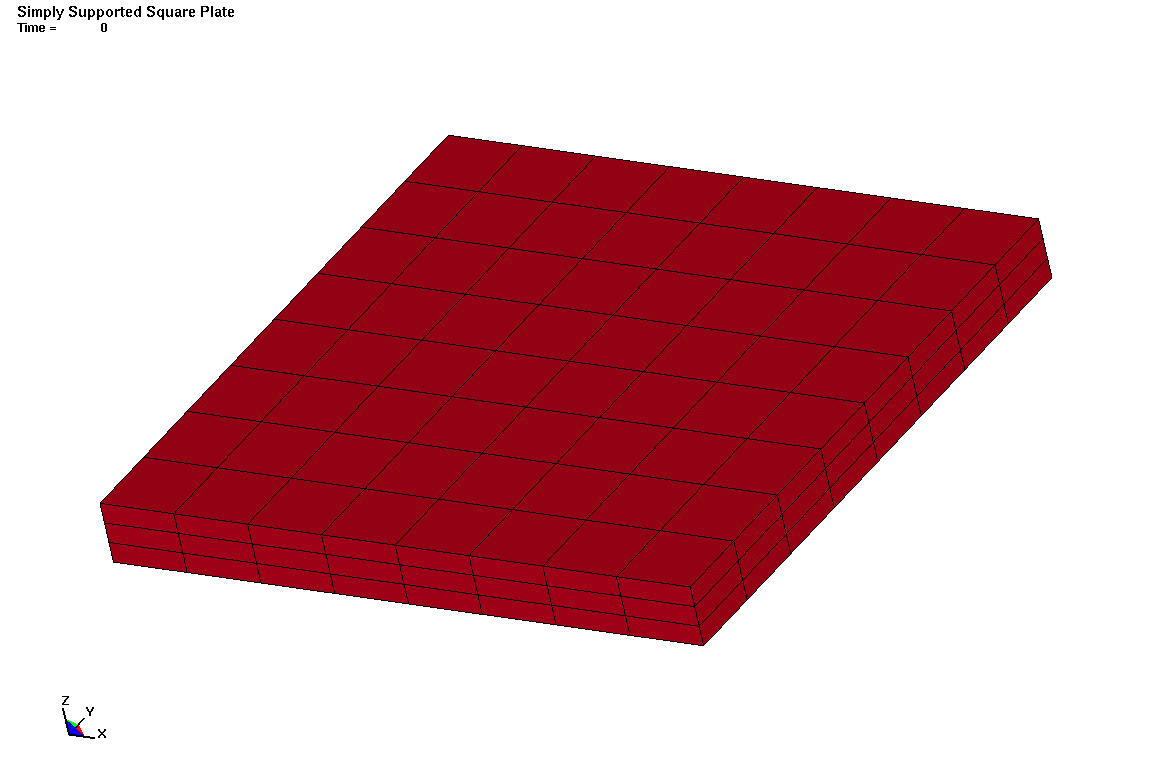
Square Plate Transient Forced Vibration (solid mesh)
Transient analysis is perfomed to obtain the response of a plate subjected to a suddenly applied pressure on its top. Differences between constant stress solid (elform 1), fully integrated S/R solid (elforms 2, -1 and -2) and fully integrated quadratic 8 node element with nodal rotations (elform 3) can be studied. Example 14 from Introductory Manual for LS-DYNA Users by James M. Kennedy.
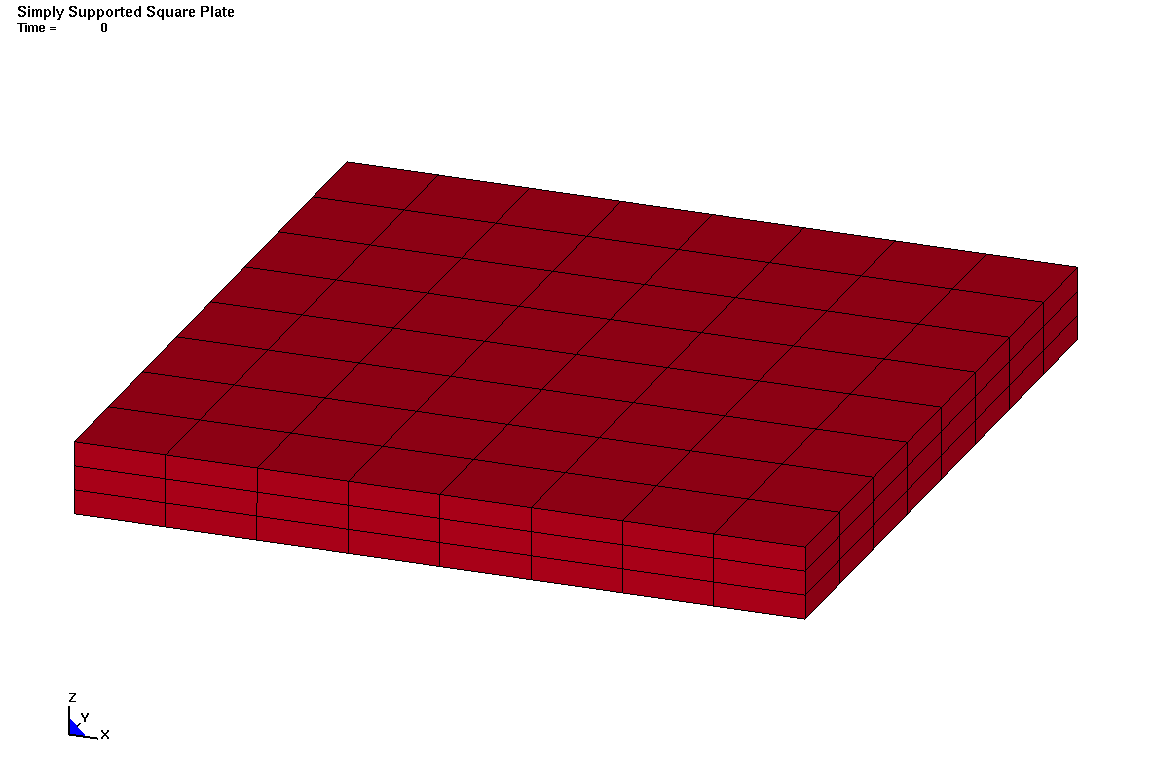
Square Plate Transient Forced Vibration (thick shell mesh)
Transient analysis is perfomed to obtain the response of a plate subjected to a suddenly applied pressure on its top. Differences between S/R IPI thick shell (elform 2), assumed strain IPI thick shell (elform 3) and assumed strain RI thick shell (elform 5) can be studied. Example 15 from Introductory Manual for LS-DYNA Users by James M. Kennedy.
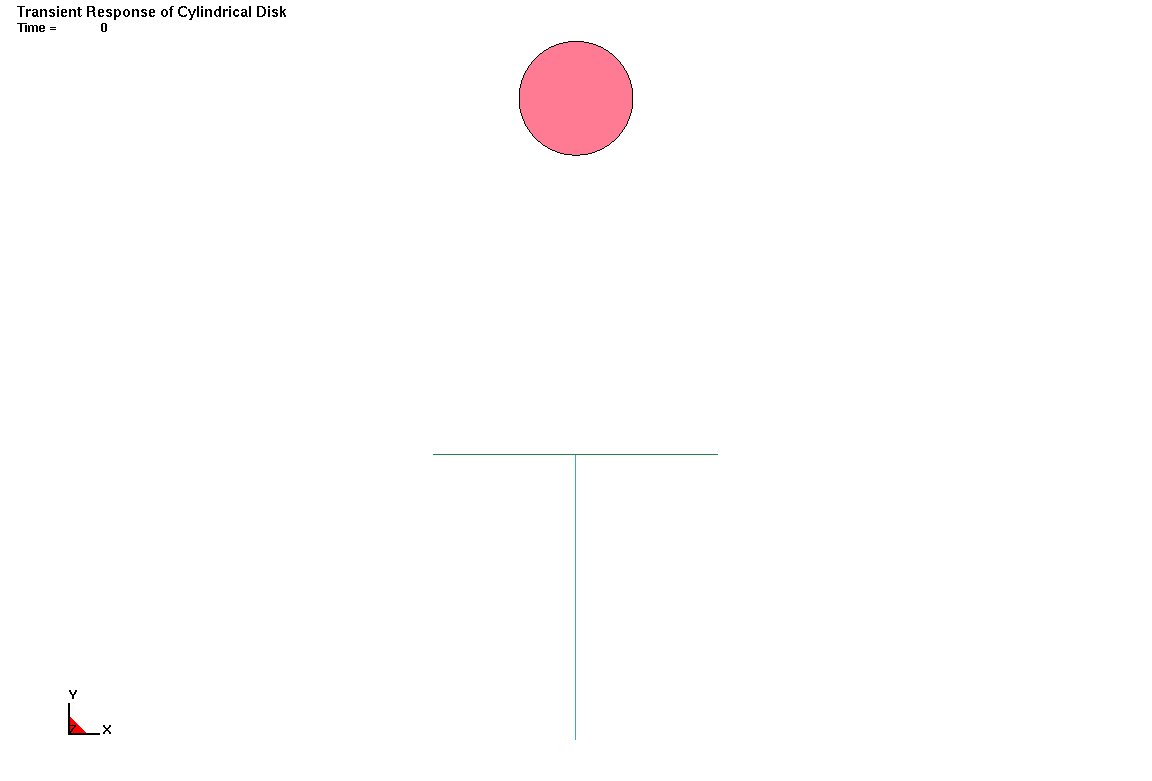
Transient Response of Cylindrical Disk
A cylindrical disk hits a deformable surface. Suitable contact algorithm is chosen. Example 16 from Introductory Manual for LS-DYNA Users by James M. Kennedy.
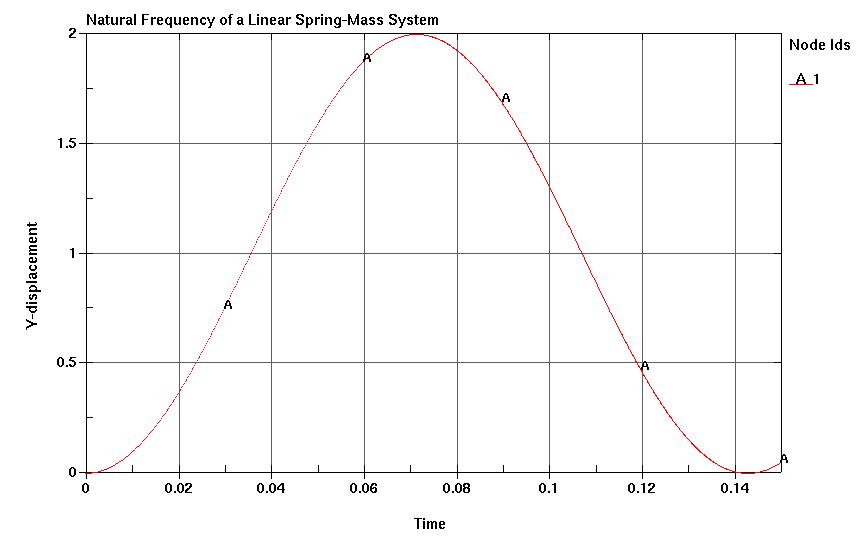
Linear Spring-Mass-System
A mass is attached to a linear spring. Period of vibration is determined. Example 17 from Introductory Manual for LS-DYNA Users by James M. Kennedy.
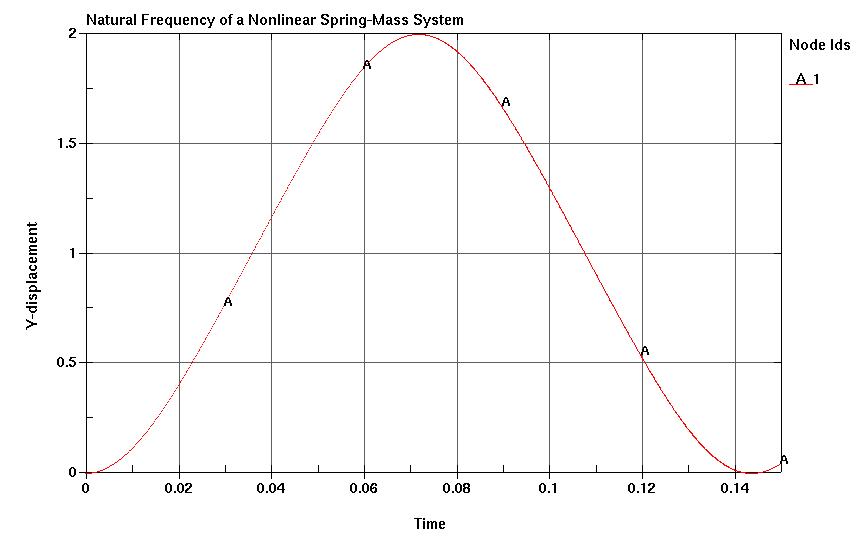
Nonlinear Spring-Mass-System
A mass is attached to a nonlinear spring. Period of vibration is determined. Example 18 from Introductory Manual for LS-DYNA Users by James M. Kennedy.
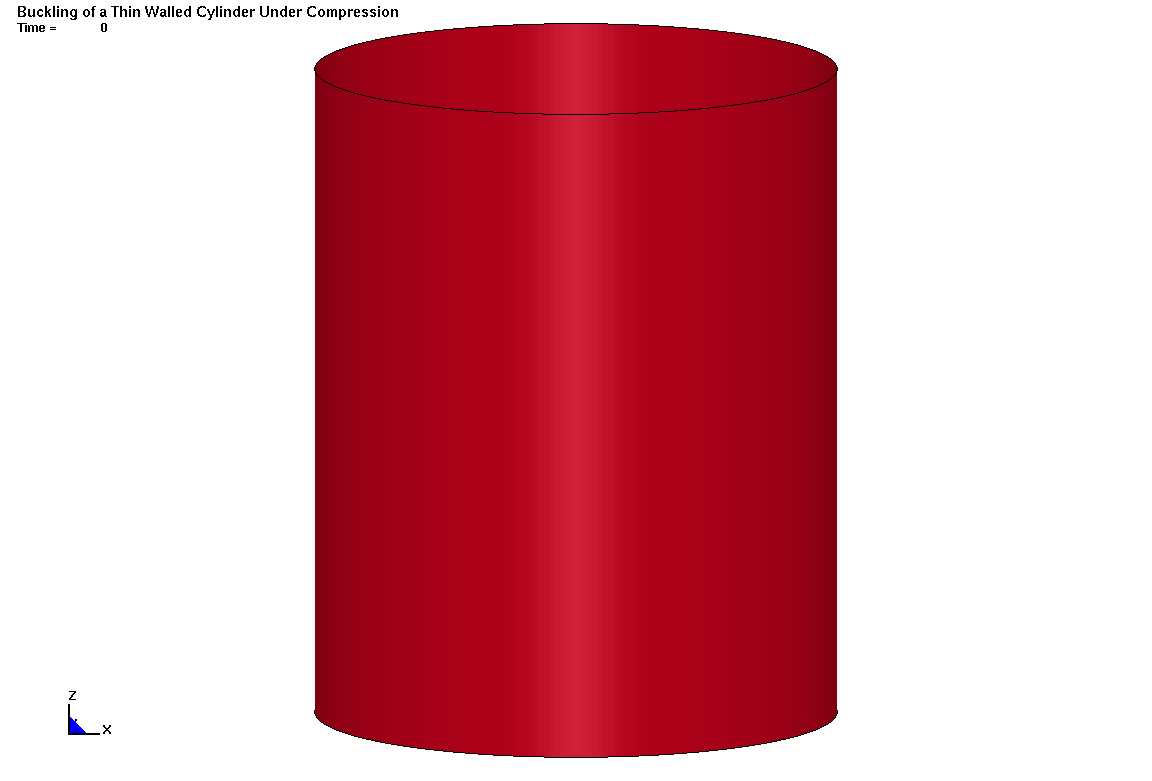
Thin Walled Cylinder Buckling
A cylinder is loaded with a uniformly distributed line load along the top edge. Critical buckling load is determined. Different meshes and differences between Belytschko-Tsay shell (elform 2), S/R Hughes-Liu shell (elform 6), Belytschko-Wong-Chiang shell (elform 10) and fully integrated shell (elform 16) can be studied.
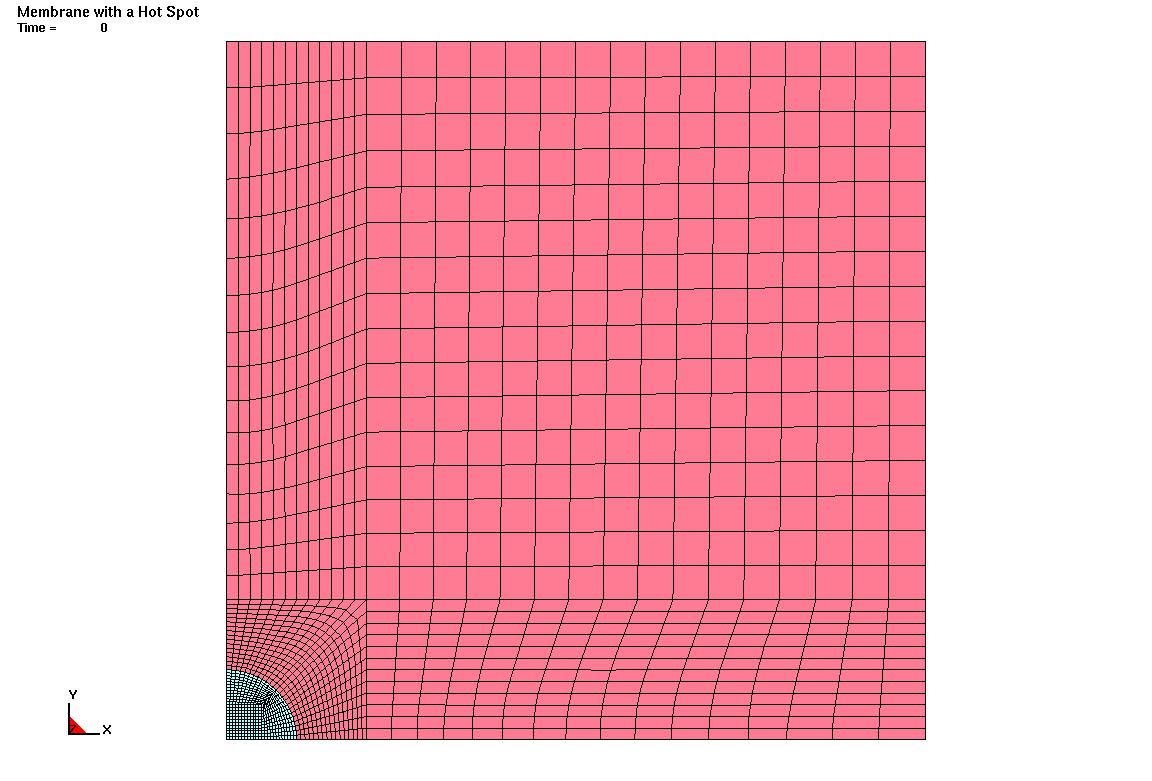
Membrane with Hot Spot
Analysis of the behavior of shell elements subjected to thermal load. Example 20 from Introductory Manual for LS-DYNA Users by James M. Kennedy.
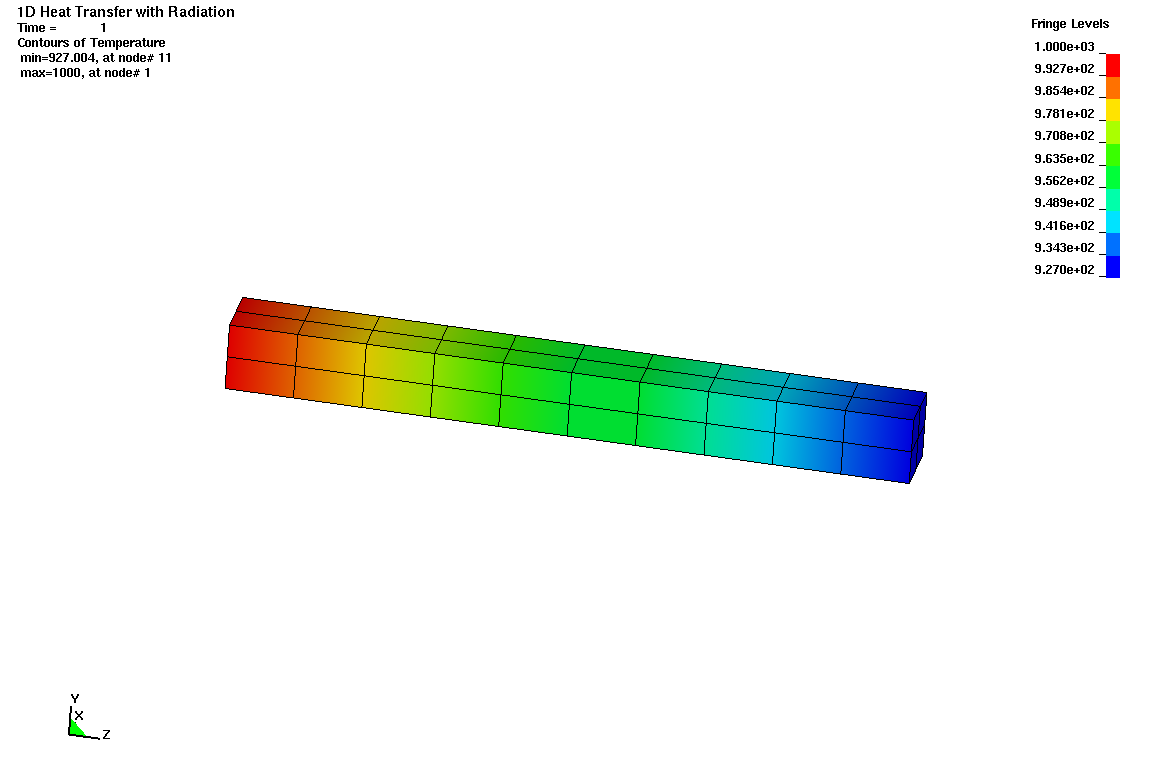
1D Heat Transfer (Radiation)
A bar radiates to an ambient temperature at one end and to a constant temperature at the other end. Example 21 from Introductory Manual for LS-DYNA Users by James M. Kennedy.
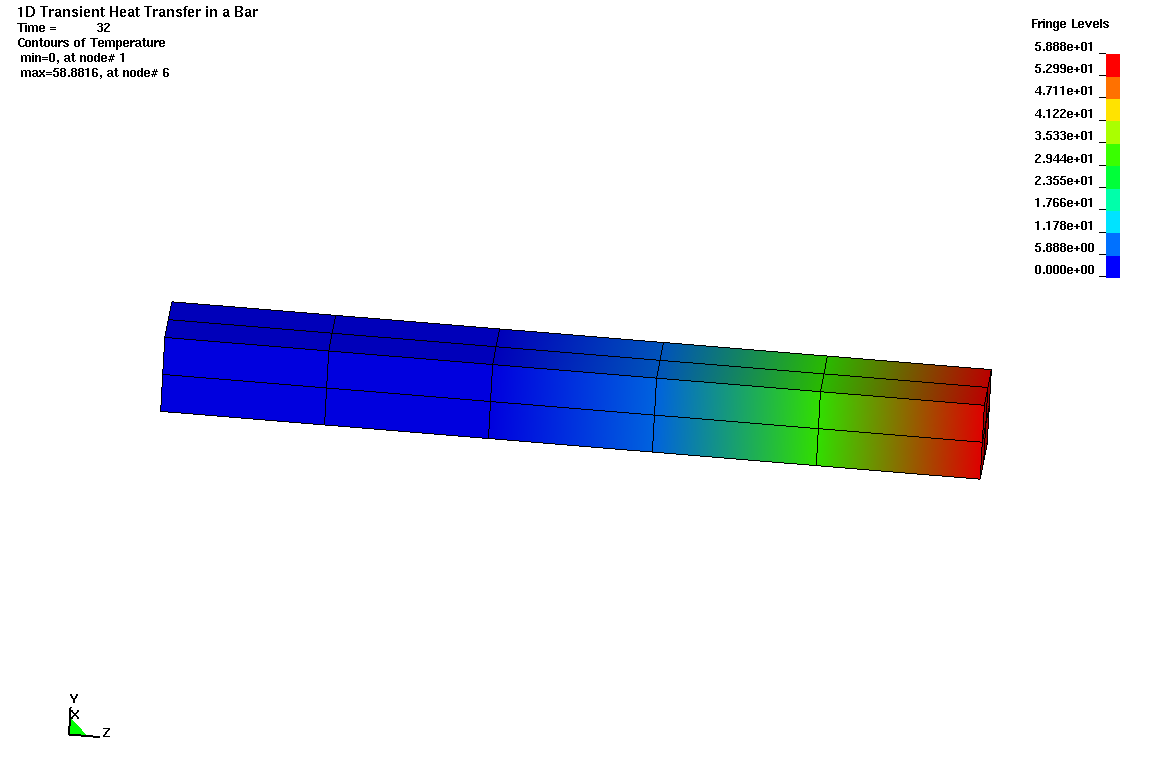
1D Heat Transfer (Bar)
A bar is subjected at one end to a varying temperature and at the other end to a constant temperature. Example 22 from Introductory Manual for LS-DYNA Users by James M. Kennedy.
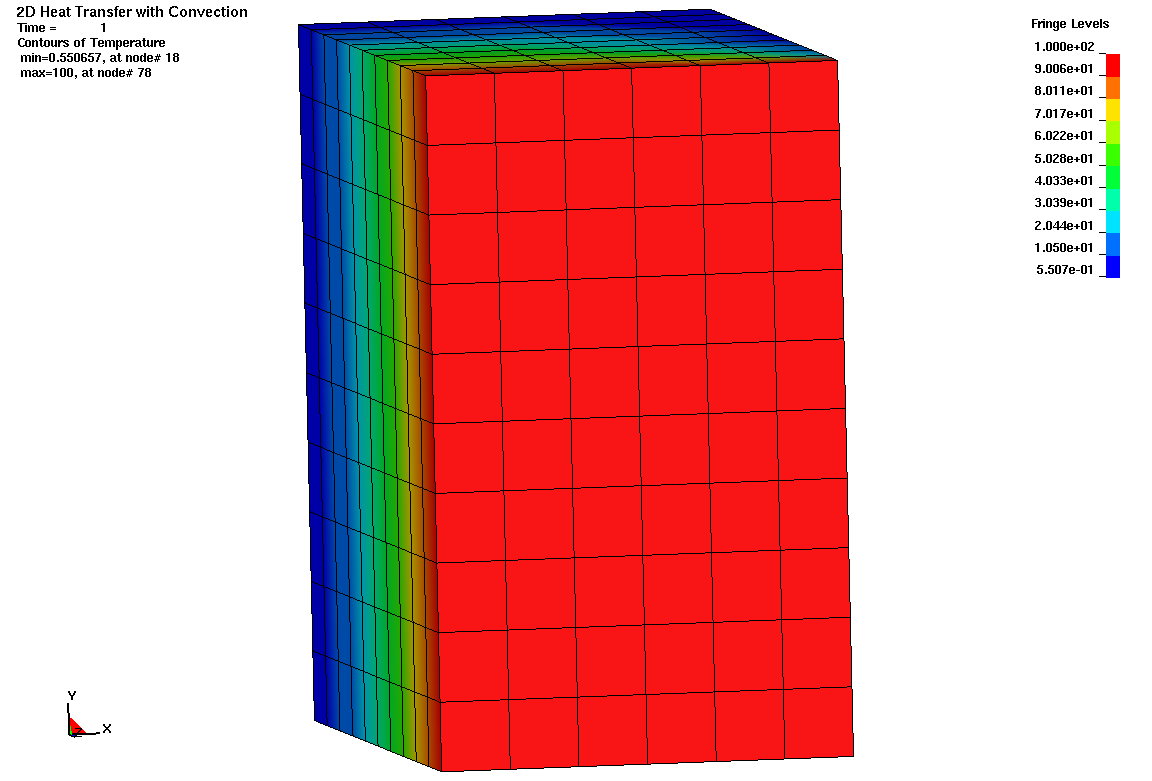
2D Heat Transfer (Convection)
A slab is subjected to thermal loads for a steady state simulation. Example 23 from Introductory Manual for LS-DYNA Users by James M. Kennedy.
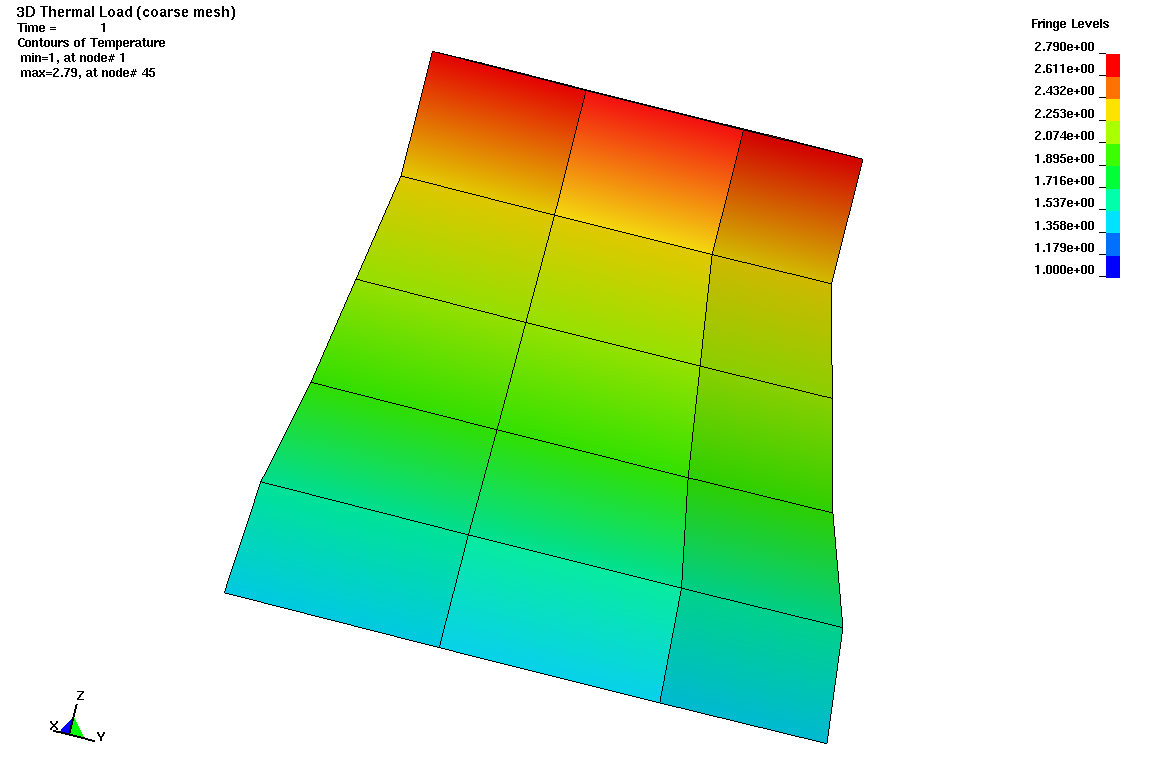
3D Thermal Load
A solid cylinder is subjected to a prescribed temperature gradient. Different meshes can be studied. Example 24 from Introductory Manual for LS-DYNA Users by James M. Kennedy.
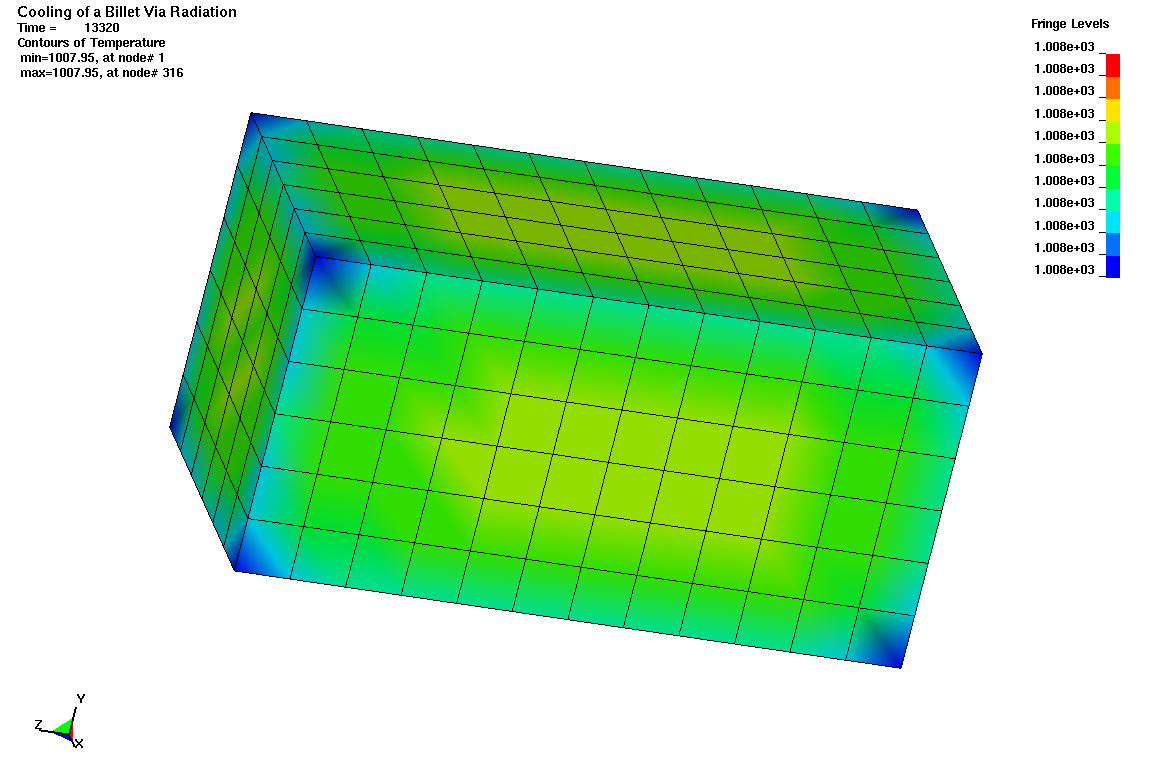
Cooling via Radiation
A billet looses heat by radiation from all its surfaces to its surroundings. Example 25 from Introductory Manual for LS-DYNA Users by James M. Kennedy.
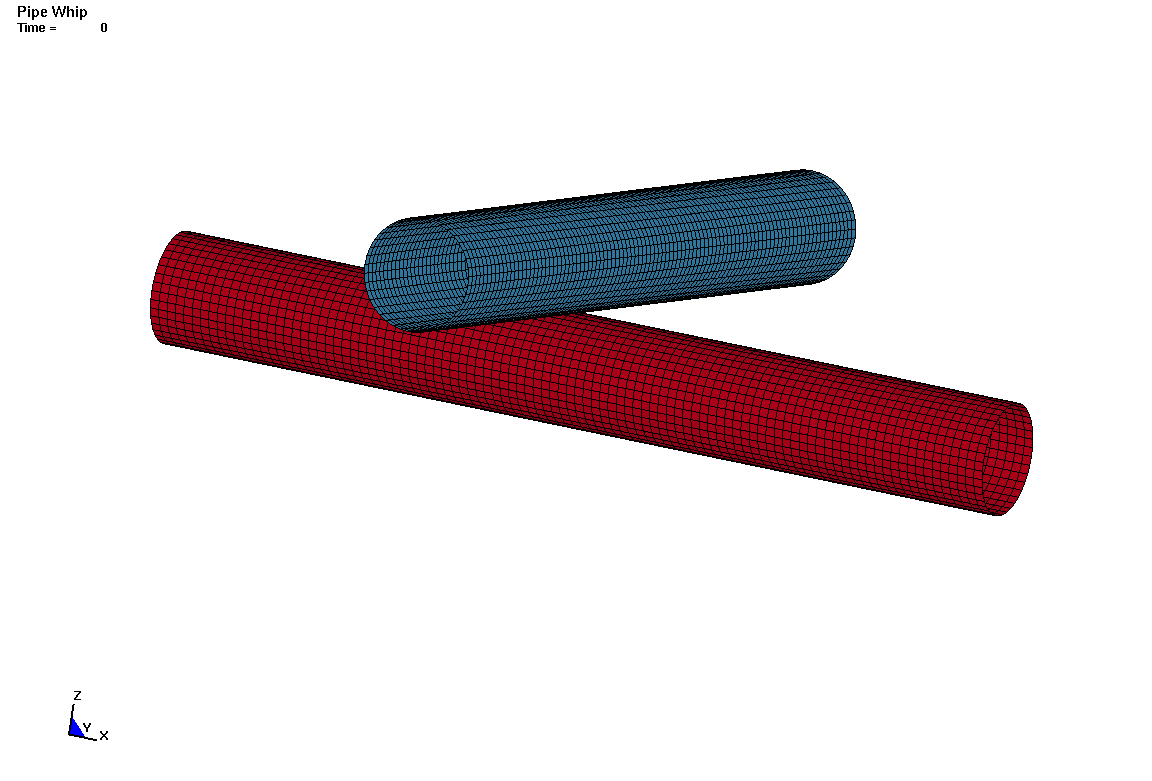
Pipe Whip
This problem illustrates a high speed, large deformation event with contact. Example 26 from Introductory Manual for LS-DYNA Users by James M. Kennedy.
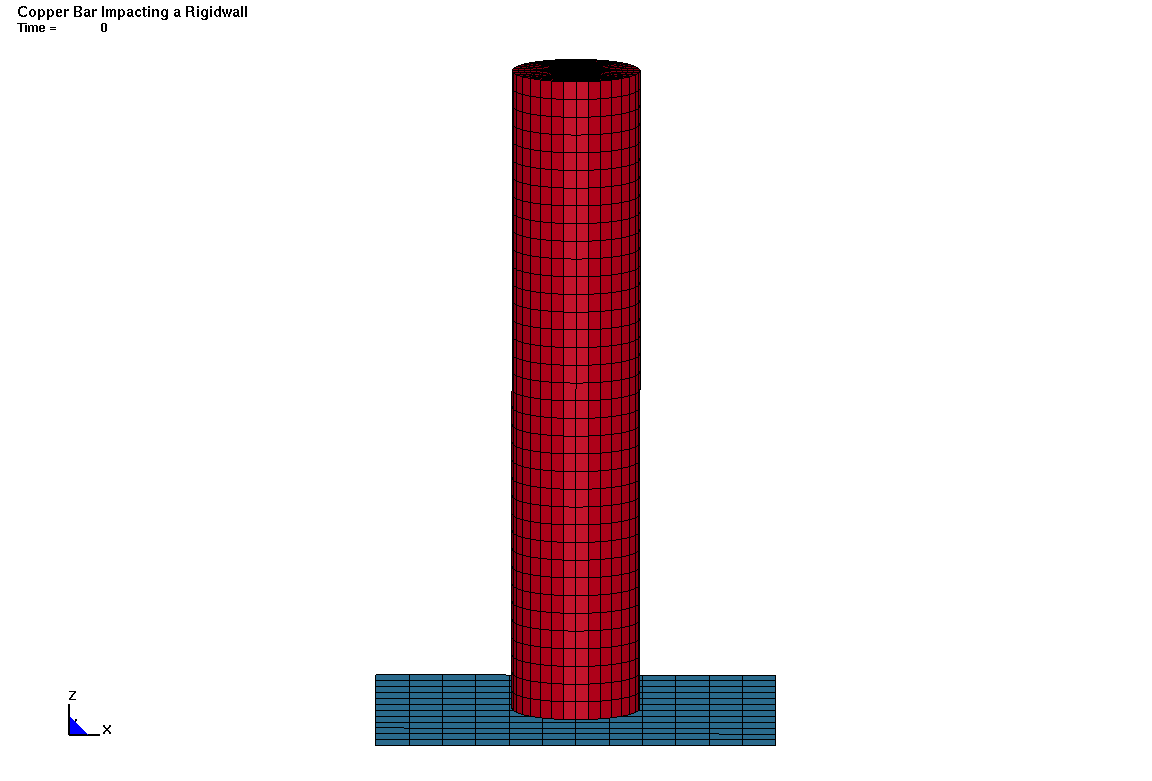
Bar Impacting a Rigid Wall
A deformable copper bar impacts a rigid wall at high speed. Differences in contact modelling via *RIGIDWALL_PLANAR and *CONTACT_AUTOMATIC_SURFACE_TO_SURFACE can be studied. Solutions with constant stress solid (elform 1), fully integrated S/R solid (elforms 1, -1, -2), 1 point tetrahedron (elform 10), 1 point nodal pressure tetrahedron (elform 13) and 1 point ALE (elform 5) can be studied. Example 27 from Introductory Manual for LS-DYNA Users by James M. Kennedy.
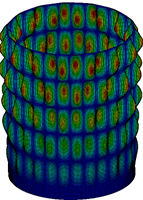
The Examples Manual
This guide is mainly addressed to first-time users. Several of the problems present a closed-form solution, while others a reference solution obtained by using an arbitrary refined mesh (NAFEMS Benchmarks). Most of the problems are IMPLICIT ones.
